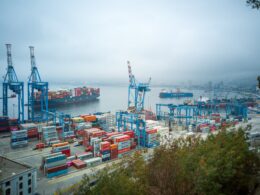By far, the most common supply chain mistake is to totally ignore there is one and most eshop owners and operations managers fall into this category. Since these people come from a simple e-commerce solution, they often ignore monitoring the steps which come before a product enters their business (purchasing it from a supplier, manufacturing it, etc.), after the product has been ordered by the customer or what happens if that product needs to be returned after it’s been sold. An e-commerce software to handle everything may just be fine when someone is starting their business. However, once the traffic starts picking up, it then becomes necessary to coordinate all these using a dedicated app. Or be left to face chaos.
It is not uncommon for business owners to believe that they know their business better than anyone else – and that includes how to run the business. Most choose to run things by going with the flow and their gut feeling. However, no matter how experienced they are in the industry, their experience is certainly not a match for the collective experience of those who have put down certain best practices in the industry. Knowing these practices and abiding by them is the first step in building a successful supply chain based venture. To pick up these best practices – broadly speaking – there are two ways:
Hire a consultant (and use an ERP system)
The first approach is to hire a specialized consultant to deliver them in practice for you. A good supply chain management consultant could provide the insight and experience required in developing better supply networks and operations. In most cases, the consultant will propose the establishment of an ERP system within the organization.
Use an ERP system
The second approach is to pick a supply chain management software yourself that already has the best practices embedded. In such a case, the software will guide the user towards to the adoption of these best practices.
If you do not know what ERP is, it is a software (in the form of a web, desktop or mobile app) that allows you to keep track -among other things- of your purchase, sales and manufacturing operations. All in all, it can efficiently log and manage the supply chain operations of your organization. For example, it can gather low stock product information and easily prepare purchase orders to re-supply those products from your Suppliers. It can receive Sales Orders from Clients and automatically adjust stock in your single or multiple warehouses. It can track the manufacturing /production of finished goods based on a Bill of Materials. Most importantly, it can accurately report on all your purchasing and sales figures and help you with business decisions on the spot.
These tasks alone are almost impossible to track without a software system, especially when your business grows and a few employees are involved in the processes. A cloud ERP system allows them to access in real-time all the above information by just using a web browser on any device; mobile, tablet or desktop. After all, synchronizing the tasks amongst employees should not be the task of the management. The latter should focus on running and growing the business.
Conversely, ignoring these best practices – most cost-effectively obtained via an enterprise application – is a surefire way to waste money and time on problems that have already been solved and your competitors may already be using.
 Kostis Mamassis is the founder and CEO of Megaventory, the online inventory management system that can help small businesses synchronize stock and manage purchases and sales over multiple stores. Since 2007, he is lecturing software development at the Department of Financial & Management Engineering (University of the Aegean) and is actively involved in numerous research and non-research projects related to transportation and logistics.
Kostis Mamassis is the founder and CEO of Megaventory, the online inventory management system that can help small businesses synchronize stock and manage purchases and sales over multiple stores. Since 2007, he is lecturing software development at the Department of Financial & Management Engineering (University of the Aegean) and is actively involved in numerous research and non-research projects related to transportation and logistics.
Connect with Kostis on Facebook, Twitter or LinkedIn!














